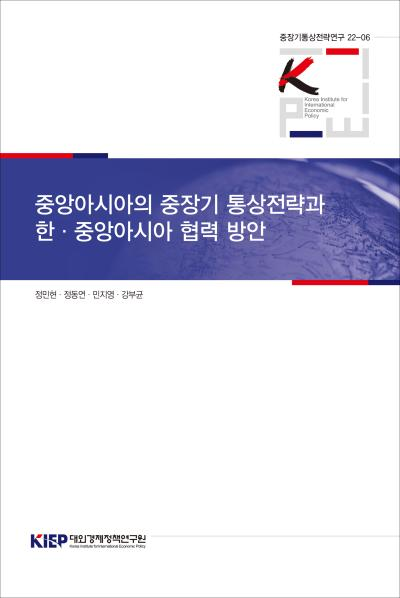Working Papers
Publications
Working Papers
To list

Central Asia’s Medium- to Long-term Trade Strategies and Korea-Central Asia Cooperation Plans
ODA
Author Minhyeon Jeong, Dongyeon Jeong, Jiyoung Min, and Boogyun Kang Series 22-06 Language Korean Date 2022.12.30
The objective of this research is to derive the future directions of cooperation between Korea and Central Asia amid rising global uncertainty in the face of competition and confrontation between significant powers with no resolution in sight, and as the strategic value of economic security increases. We are facing a period of fragmentation of the global value chain. Korea’s economy, which has scarce natural resources and relatively abundant high-quality human capital, has long relied on expanding markets through trade and increasing efficiency through resource allocation through the international division of labor as the foundation of economic growth. Therefore, in the current era of increasing global economic uncertainty obscuring even near-future prospects, it is an urgent time to establish a new external cooperation system more appropriate for the times. Especially in the situation where the sanctions on the Russian economy are expected to be prolonged, the geographic value of Central Asia, which connects Russia and Europe, has become more prominent. In addition, considering the rich natural resources and relatively young population structure of Central Asia, expanding cooperation with Central Asia has even more significant implications. In this study, based on the developmental level of each individual country, we classified the five Central Asian countries into three middle-income countries (Kazakhstan, Uzbekistan, Turkmenistan) and two low-income countries (Kyrgyzstan, Tajikistan) based on the commonalities and differences revealed in the structural characteristics of each country’s economy. This classification enables us to more systematically understand the growth issues that Central Asia’s middle- and low-income countries need to resolve for sustained growth, and to provide macro-level answers for the direction of cooperation between Korea and these countries.
In chapter 2 of this report, long-term growth challenges for each of the Central Asian countries are identified. Firstly, challenges blocking the growth of Kazakhstan, Uzbekistan, and Turkmenistan, which are middle-income countries in Central Asia, are summarized as diversification and advancement of industrial structure. Despite high growth, the development of medium- and high-value-added manufacturing industries that play an essential role in productivity improvement is being delayed. The delay in industrial structure transformation to medium-and high- value-added industries hinders the essential qualitative growth for the long-term growth of middle-income countries in Central Asia, which could lead to chronic growth delay akin to the so-called “middle-income trap.” On the other hand, the growth challenges of Kyrgyzstan and Tajikistan, low-income countries in Central Asia, can be summarized as expanding industrial infrastructure through physical capital accumulation. It is necessary to expand physical capital to form industrial infrastructure quickly. Through this, it becomes possible to embed labor in labor- intensive export goods such as food and clothing instead of directly exporting labor to neighboring countries and selling them overseas. In order to do this, it is necessary to establish a domestic industrial infrastructure suitable for the country’s stage of economic development by utilizing relatively abundant labor compared to neighboring countries.
Chapters 3 to 5 outline the directions for cooperation in digital, climate change, and health and medical fields. The directions were derived mainly from material cooperation related to physical capital, and human resources cooperation related to human capital. According to the empirical data examined, there were significant differences in the demand for cooperation between Central Asian low- and middle-income countries in all the three fields mentioned above. This is because the overall cooperation environment, including digital industry technology, infrastructure, and system laws and regulations; energy and power infrastructure; and health and medical infrastructure and technology, varies depending on each country’s economic development level. The direction of cooperation with Central Asian middle-income countries can be summarized as requiring state-of-the-art technology, infrastructure, and industrial cooperation in all the three areas mentioned above, along with higher-level professional and engineering exchange and transfer of managerial skills in terms of human exchange. On the other hand, cooperation related to urgent primary infrastructure expansion is primarily needed for low-income countries regarding material exchange, which has been shown to be effective for growth.
Sales Info
| Quantity/Size | 218 |
|---|---|
| Sale Price | 10 $ |
 공공저작물 자유이용허락 표시기준 (공공누리, KOGL) 제4유형
공공저작물 자유이용허락 표시기준 (공공누리, KOGL) 제4유형
대외경제정책연구원의 본 공공저작물은 "공공누리 제4유형 : 출처표시 + 상업적 금지 + 변경금지” 조건에 따라 이용할 수 있습니다. 저작권정책 참조
